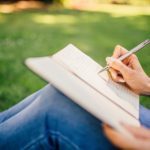UPenn Diversity Statistics: An In-Depth Look
What’s Covered:
- Overview of UPenn Diversity Statistics
- Cultural Resources at UPenn
- Plans to Improve Diversity at UPenn
- LGBTQ+ Inclusivity at UPenn
- How Diverse and Inclusive is Philadelphia, PA?
Established largely through the efforts of future Founding Father Benjamin Franklin, the University of Pennsylvania was built with diversity in mind—at the time of its founding, the other colleges in the colonies were devoted to educating young men for the Christian Ministry. Conversely, Franklin’s vision for UPenn was to train young people for leadership in business, government, and public service.
UPenn has been at the forefront of diversity since its beginnings—it was one of the first universities in the U.S. to admit women and welcomed its first Black student in 1879. Today, UPenn continues to build on a legacy of diversity and inclusion that dates back more than two and a half centuries.
Overview of UPenn Diversity Statistics
Ethnic Diversity
UPenn has cultivated a diverse class of students since its earliest years—it welcomed two Mohawk brothers into its inaugural class in 1755. Today, ethnic minorities make up more than half of the undergraduate population.
|
Ethnicity |
Percentage of Undergraduate Population |
|
White |
40.65% |
|
Asian |
16.6% |
|
Hispanic/Latino(a) |
7.83% |
|
African American/Black |
6.74% |
|
Native American or Pacific Islander |
<1% |
|
Two or more races |
3.57% |
|
Unknown |
3.67% |
|
International |
21.28% |
The diversity of UPenn’s undergraduate class isn’t mirrored in its staff and faculty, which is more monocultural. UPenn has recognized this issue and is addressing it—between 2011 and 2019, the University saw a 34% increase in minority faculty members.
|
Ethnicity |
Percentage of Faculty/Staff |
|
White |
68.8% |
|
Asian American |
12.3% |
|
Hispanic/Latino(a) |
4% |
|
African American/Black |
12.49% |
|
Native American or Pacific Islander |
<1% |
|
Two or more races |
1.28% |
Gender
Women make up 54% of UPenn’s undergraduate class and 53.6% of its faculty. UPenn has been addressing previous inequalities—between 2011 and 2019 the University has increased its number of female faculty members by 22%.
Financial Diversity
Like many other elite institutions, UPenn has a reputation for attracting students from high-earning families. According to an article published by The New York Times in 2017, UPenn ranked 29th out of 2,395 colleges for students coming from families with the highest median income—the average family income of a UPenn student was $195,500. 71% of UPenn students come from families in the top 20% of average income.
|
Share of Students from Average Income Percentile |
Percentage of Student Body |
|
Top 0.1% |
3.6% |
|
Top 1% |
19% |
|
Top 5% |
45% |
|
Top 10% |
58% |
|
Top 20% |
71% |
|
Bottom 20% |
3.3% |
For students who require financial aid, UPenn is generous. The school practices need-blind admissions—it does not consider a student’s financial situation when making admissions decisions. UPenn is also committed to meeting 100% of a student’s demonstrated financial need.
UPenn also provides no-loan aid—packages made up of scholarships and work-study funds that do not need to be repaid—to eligible students from all income levels. This allows students to receive a high-quality education without incurring long-lasting debt. In the 2020-2021 academic year, 45% of UPenn undergraduates received grant-based financial aid with the average package totaling $56,693.
Geographic Diversity
According to UPenn, in 2020 the school admitted students from all 50 states and from 101 countries in attendance. However, some areas are better represented than others. For example, a Daily Penn article highlights that 53.2% of non-international students in the class of 2019 came from just four states: Pennsylvania, New York, New Jersey, and California.
Cultural Resources at UPenn
Cultural Centers
UPenn’s campus is home to six cultural resource centers. Open year-round, UPenn’s cultural centers provide a place for students to learn, grow, and share. The six cultural centers are:
- Greenfield Intercultural Center: Fosters intercultural understanding through cross-cultural activism, reflection, and dialogue.
- La Casa Latina: The Center for Hispanic Excellence: Creates awareness around Latinx culture, issues, and identity.
- Lesbian, Gay, Bisexual, and Transgender (LGBT) Center: Supports the LGBT community through mentoring, workshops, advocacy, and events.
- Makuu Black Cultural Center: Advising and leadership for students interested in Black culture and the African Diaspora.
- PAACH: Pan-Asian American Community House: A hub for students to celebrate South Asian, East Asian, Southeast Asian, and Pacific Islander cultures.
- Penn’s Women Center: A safe space for students to discuss gender equity with an interest in workplace discrimination, domestic and sexual violence, and other important topics.
Clubs and Organizations
More than 400 student clubs and organizations, many of which are focused on culture and identity, call UPenn’s campus home. For example:
- Chinese Students’ Association (CSA)
- Japanese Student Association (JSA)
- Penn Arab Student Society
- Penn in Hand (American Sign Language and Deaf Club)
- La Vida Magazine (Latinx publication celebrating Latinx culture)
- Penn Masala (a South Asian acapella group)
- The French Society
- Penn Russian Club
- oSTEM at Penn (an advocacy group for LGBT students in STEM)
Living-Learning Communities
UPenn is also home to a handful of “program communities,” which are living-learning environments for students with shared interests. There are a number of program communities focused on identity, including:
- First Generation, First Step
- Policy, Politics and Social Change
- Engineers in the Arts (a Student-Designed Community)
- Penn Women in Leadership
Plans to Improve Diversity at UPenn
UPenn faces issues similar to those of other well-established, highly ranked colleges—that is, a class and faculty from elite, white backgrounds—but the school is committed to creating a more diverse and inclusive campus. In 2011, the University unveiled a five-year plan, Action Plan for Faculty Diversity and Excellence, that called for programs and accountability to improve diversity, inclusion, and gender equity. In 2017, the continuation of this plan for an additional five years was announced. Some highlights from the University’s plan include:
- The proportion of minorities on UPenn’s faculty grew from 20% to 25% (2011-2018)
- The proportion of underrepresented minorities on standing faculty grew from 6% to over 8% (2011-2018)
- Number of women on standing faculty increased by 22% (2011-2018)
- In 2018, women hires outpaced women departures by about 15%
- No significant difference in base salaries paid to men and women faculty in both 2017 and 2018—considering both the discipline and the time in rank
Since the Action Plan for Faculty Diversity and Excellence was implemented, UPenn has also grown its cultural and identity programs and centers. Additions include:
- The Department of Africana Studies
- The Native American & Indigenous Studies Initiative
- The Center for Experimental Ethnography
- The Racial Empowerment Collaborative
- The Penn Wharton China Center
- The Center for the Study of Contemporary China
- The James Joo-Jin Kim Program in Korean Studies
- The Penn Program on Race, Science & Society
- The Center for the Study of Ethnicity, Race and Immigration
- The Center for Global Women’s Health
- The LGBT Health Program
- The Center for Asian Law
- The Global Women’s Leadership Project
LGBTQ+ Inclusivity at UPenn
UPenn receives five out of five stars on the Campus Pride Index—an LGBTQ inclusivity benchmarking tool—earning high marks almost across the board. The only place UPenn falls short on the Campus Pride Index is LGBTQ Academic Life, where the University loses points for its lack of training for faculty and staff on gender and sexual orientation issues.
UPenn’s LGBT Center, established in 1982 following several homophobic incidents on campus, is the second-oldest LGBTQ+ center in the U.S. Today, the Center is the hub of UPenn’s LGBTQ+ community—it hosts a handful of recurring events such as Penn LGBTQ+ Staff/Faculty Tea Time, and has produced a video series addressing issues affecting the LGBTQ+ communities.
UPenn is on the path to becoming more LGBTQ+ inclusive—it has over 80 all-gender restrooms and is working to grow that number, and it even has a fund (The Leslie Townsend Fund) to support students making a gender transition while at UPenn.
Despite the school’s high rank and progressive attitude, there is still room for improvement. For example, the school does not have an LGBTQ+ living-learning community, nor does it have an LGBTQ+ fraternity or sorority—the closest thing is Alpha Delta Phi Society, a co-educational social and literary fraternity.
How Diverse and Inclusive is Philadelphia, PA?
Philadelphia is the sixth-largest city in the U.S. and has all the cultural benefits that go with being a major city like great food, excellent museums, and a variety of recreational opportunities. Philadelphia is also home to a number of colleges and universities—such as Temple, Drexel, St. Joseph’s, and La Salle, to name a few—which creates a steady flow of young people from a variety of backgrounds into the city.
The ethnic breakdown of Philadelphia is:
|
Ethnicity |
Percentage of Population |
|
Black/African American |
40.1% |
|
White (non-Hispanic) |
34.1% |
|
Hispanic |
6.68% |
|
Asian |
7.36% |
|
White (Hispanic) |
5.2% |
Philadelphia consistently ranks among the most LGBTQ+-friendly cities in the U.S., which is no surprise for a city that birthed the ideals of life, liberty, and the pursuit of happiness. The city has been at the forefront of LGBTQ+ culture for decades—before the Stonewall Riots in New York and the launch of the worldwide Gay Rights Movement, protesters were holding an annual July 4th Pride March in front of Independence Hall.
Philadelphia was also one of the first U.S. cities to embrace LGBTQ+ tourism, launching a cleverly titled marketing campaign, “Get Your History Straight and Your Nightlife Gay.” The city also hosts a variety of Pride celebrations, along with LGBTQ+-centered weekly parties, art events, and nightlife. Philadelphia’s “Gayborhood” puts LGBTQ+ at the forefront, with rainbow street signs, LGBTQ+ art, and LGBTQ+-owned businesses.
Is UPenn the Right Fit for You?
There’s a lot to love about UPenn—its Ivy League status, rich history, and excellent location entice students from around the world to its campus. When deciding on what college to attend, students should consider how well a school aligns with their ideals and aspirations. While diversity is an important consideration, it’s just one that students should contemplate.
For example, UPenn’s inclusion in the Ivy League and commitment to diversity are excellent qualities, but if you didn’t want to go to a school in a big city, you might end up disappointed. Similarly, if you had dreams of attending college in a warm-weather destination, the first frigid Philly winter might have you regretting your decision to attend UPenn.
CollegeVine’s free school search tool can help you find a school that’s a good fit for you, as it allows you to sort colleges from a wide variety of factors, such as region, class size, and whether the school has a study abroad program. You can even search to see if a school has D-1 football if you dream of fun-filled fall Saturdays at the big game.
Once you’ve narrowed your list of schools down, CollegeVine’s free chancing engine can show you your odds of admission using your GPA, extracurriculars, test scores, and more. It can also help you see what you can do to improve your profile and increase your chances of getting into your dream school!



